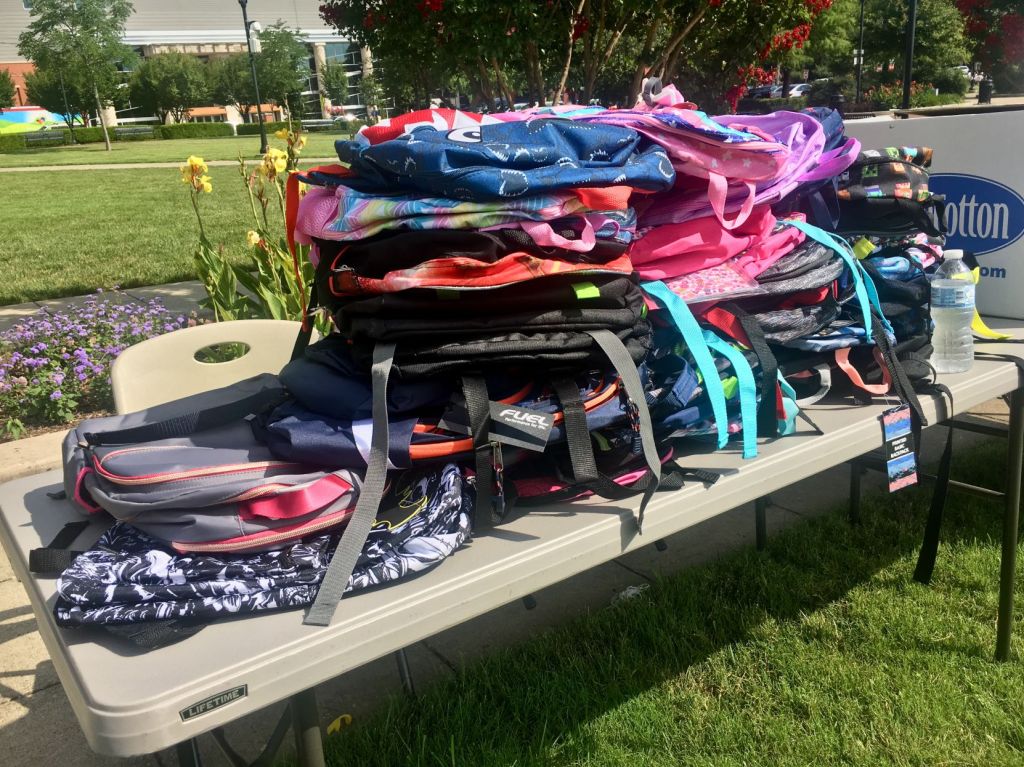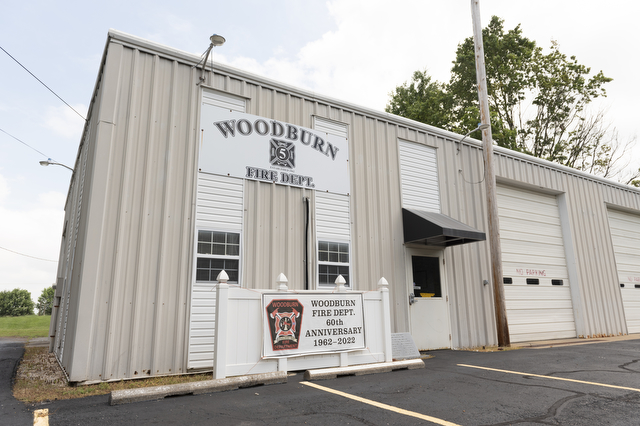Bosnians remember genocide with fifth annual walk
Published 6:00 pm Saturday, July 13, 2019

- Backpacks that will be donated to schoolchildren are piled high on a table during the Walk to Remember Srebrenica Saturday, July 13, 2019, at Circus Square Park. (Drake Kizer/dkizer@bgdailynews.com)
Bowling Green’s Bosnian community held the fifth annual Walk to Remember Srebrenica on Saturday, sauntering through the streets of downtown Bowling Green in memory of the Srebrenica genocide – a massacre that killed more than 8,000 Bosnian Muslims beginning July 11, 1995.
Bosnian Serb troops killed 8,372 Muslim men and boys 24 years ago in and around the Bosnian town of Srebrenica. Local Bosnians gathered at Circus Square Park at 8:30 a.m. and later took one step to commemorate each life lost during the massacre – the deadliest in Europe since World War II.
Sabina Husic, one of the walk’s organizers, is a survivor of the Srebrenica genocide. Husic lost three uncles, a cousin and her grandfather in the conflict before her family came to the United States when she was 8 years old.
“I was about 6 or 7 when that was happening in Bosnia, so I was old enough to remember quite a bit,” Husic said. “After it happened, that’s all people talked about for many years because at that time, we didn’t have cellphones, we didn’t have emails or any of those things and so the only way you found out where your family members were or if they were alive or not was through word of mouth, so for many years people would just talk about the events that happened and so that memory never went away for me and my family.”
Hundreds of people solemnly walked for massacre victims, filing in orderly fashion behind the roughly eight male survivors carrying a banner that featured a simple message: “Never Forget Srebrenica Genocide.”
Walkers left Circus Square Park shortly after 9:30 a.m. and began working their way past the Southern Kentucky Performing Arts Center and up College Street. Their journey eventually took them to the Warren County Justice Center, where a moment of silence was held. Participants then traveled on State Street and arrived back at the park.
According to organizers, the walk required about 8,372 steps, which equated to about a mile and a half of walking at a leisurely pace.
Husic said the event always “hits close to home” for the Bosnian community, but that was especially true this year because one of the 33 newly identified victims buried in Bosnia last week was a relative of community members.
“A father, grandfather, uncle and so on and so forth – we have one of our own that was buried on Thursday in Potočari at the cemetery.”
Denis Hodžić, one of the walk’s organizers, has lived in Bowling Green since 1999. Hodžić said there were more than 80,000 Bosnians killed during the war and roughly 10 percent of those casualties occurred during the genocide, which means Bosnians can’t afford to forget or let history repeat itself in the future.
Hodžić said many of the genocide’s perpetrators deny that a genocide ever occurred, which means it’s important to remind the world about the event.
“The best part will definitely be seeing our people come together and to show a unified front,” Hodžić said prior to the walk. “To show that this is our history, this is part of what defines us as people and we’re not going to let revisionists deny it. We’re not going to let them just say that it didn’t happen to us.”
Organizers also asked walk participants to bring backpacks that will be donated to schoolchildren. The backpacks symbolize the satchels fleeing Bosnians filled with their personal belongings during the event, Hodžić said.
In addition to Bosnian participants, the event also featured opening remarks from Brent Björkman, director of the Kentucky Museum and Kentucky Folklife Program. City Commissioners Dana Beasley-Brown, Sue Parrigin and Brian “Slim” Nash were also on hand to read a proclamation from the mayor.
Parrigin thanked the Bosnians for being a “vibrant part of this community.”
“I learned just this week that 10 percent of the population of the City of Bowling Green is of Bosnian descent,” Parrigin said before pausing for a round of applause from the audience. “So, I want to thank each and every one of you all and we’re so proud to have every single one of you and your families here in Bowling Green and bring on some more.”
Following Parrigin’s remarks, each of the three commissioners read separate parts of a proclamation from Mayor Bruce Wilkerson that retroactively declared July 11 as “Srebrenica Remembrance Day” in the city.
“The people of Bosnia have made Bowling Green, Kentucky, their new home and have been welcomed as our friends and neighbors,” Nash said.
“We weep with our Bosnian friends and neighbors for the atrocities that occurred in the city of Srebrenica, but we celebrate the flourishing community of the Bosnian people here in Bowling Green,” Beasley-Brown said.
Björkman reminded the crowd about the ongoing oral history project still being conducted at the Kentucky Museum at Western Kentucky, even though the “A Culture Carried: Bosnians in Bowling Green” exhibit ended May 11.
“We are keeping these stories for the generations to come to talk about what are the things that are important to us, what are the things that you went through as Bosnians to come here to be part of Bowling Green, to be part of Kentucky, to add your voices and to add so much value to our community,” Björkman said prior to the walk, which he also participated in himself.
Hodžić wore a crocheted pin featuring the flower of Srebrenica on his T-shirt, a symbol he said represents innocence, hope and mourning for victims of the atrocities that occurred during all of the Bosnian War, not just the genocide.
In addition to expanding horizons for the flower’s meaning, Hodžić is also working to make sure the Bosnians are understood by their neighbors.
“That is a big deal for us to have that connection as well,” Hodžić said. “To share it with our local citizens and to maybe break down some of those artificial barriers that we erect between ourselves somewhat superficially sometimes to understand what our story was, how we got here, what the process was of getting here and what we faced to get here – not just some of the rhetoric that we hear other times.”





